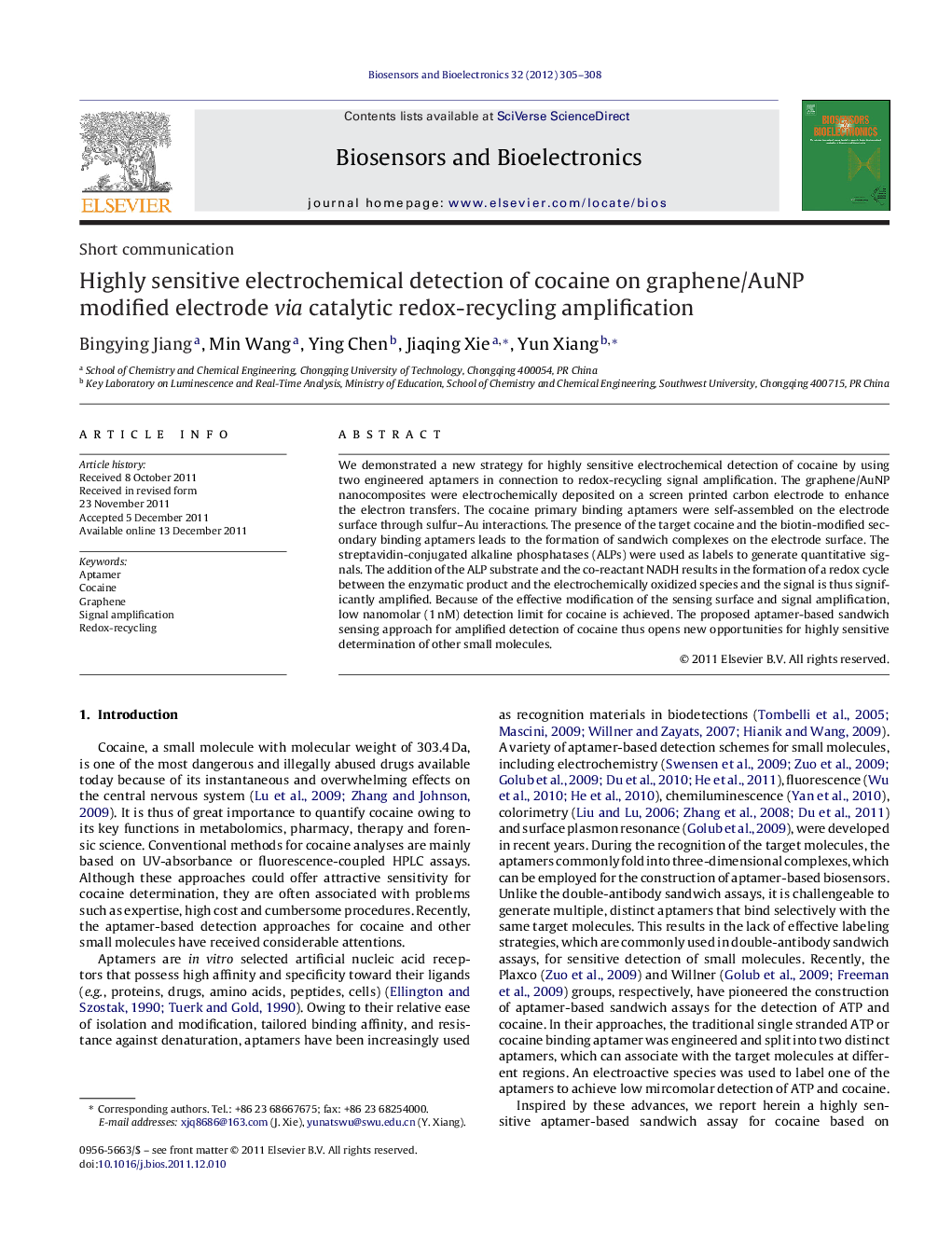| Article ID | Journal | Published Year | Pages | File Type |
|---|---|---|---|---|
| 867575 | Biosensors and Bioelectronics | 2012 | 4 Pages |
We demonstrated a new strategy for highly sensitive electrochemical detection of cocaine by using two engineered aptamers in connection to redox-recycling signal amplification. The graphene/AuNP nanocomposites were electrochemically deposited on a screen printed carbon electrode to enhance the electron transfers. The cocaine primary binding aptamers were self-assembled on the electrode surface through sulfur–Au interactions. The presence of the target cocaine and the biotin-modified secondary binding aptamers leads to the formation of sandwich complexes on the electrode surface. The streptavidin-conjugated alkaline phosphatases (ALPs) were used as labels to generate quantitative signals. The addition of the ALP substrate and the co-reactant NADH results in the formation of a redox cycle between the enzymatic product and the electrochemically oxidized species and the signal is thus significantly amplified. Because of the effective modification of the sensing surface and signal amplification, low nanomolar (1 nM) detection limit for cocaine is achieved. The proposed aptamer-based sandwich sensing approach for amplified detection of cocaine thus opens new opportunities for highly sensitive determination of other small molecules.
► Modification of electrode surface with graphene/AuNP nanocomposite to enhance electron transfers. ► The use of two engineered aptamers to form sandwich format for cocaine detection. ► Dual signal amplification by catalytic redox-recycling. ► Highly sensitive detection of cocaine down to the low nanomolar level.
